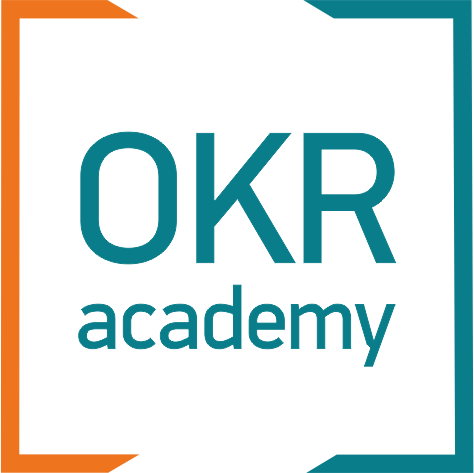OKR Implementation
How Long Will OKRs Last Without Top Management Involvement?
Many companies face challenges implementing OKRs due to employee resistance. There can be many reasons for this, which I discuss in various articles. Today, I want to talk about one of the most obvious and unfortunately quite common ones – shifting the responsibility for implementing OKRs from top management to employees.
Recently, a client, an engineering company, approached me. A year ago, they had a training on OKRs with another coach. They started implementing it, lasted one quarter, and then everything stopped. Now, they have come to me to restart the system.
Their request, which is likely not much different from last year's, reveals the main reason why it didn’t take off:
Their request, which is likely not much different from last year's, reveals the main reason why it didn’t take off:
Me:
What do you want?
Client:
We want 15 department heads to set OKRs for themselves for the year
Me:
Are OKRs set at the company level?
Client:
No, we don’t want to set company-level OKRs, maybe only the CEO will outline two Objectives.
Me:
Why not?
Client:
Because OKRs should have Owners, and none of the leaders want to take responsibility for them. They don’t even want to set their own OKRs and don’t understand why they need them. But we want the leaders to have OKRs, initiate many projects, and show us their progress.
How many “red flags” did you count in this dialogue?
Let's start with the question “Why?”. Why does this company actually need to implement OKRs? Did the leader hear about it, get inspired, and think that OKRs are a magic pill that will make the company successful? But without involving top management?
We have developed and discuss with clients a readiness checklist at the start, which describes both the conditions and the benefits received.
Let's start with the question “Why?”. Why does this company actually need to implement OKRs? Did the leader hear about it, get inspired, and think that OKRs are a magic pill that will make the company successful? But without involving top management?
We have developed and discuss with clients a readiness checklist at the start, which describes both the conditions and the benefits received.

In this example, the first point was fulfilled – there was a big strategic goal. But do they really need OKRs as a management system for strategic changes if everything is already defined at the CEO level, and the leaders’ goals are just for control?
In my experience, the best results from implementing OKRs occur when C-1 level leaders are involved in defining company-level OKRs. This way, they not only deepen their understanding of overall goals and synchronize their vision but also develop a sense of ownership. Then, they can more consciously communicate to their teams and set second-level OKRs. Not their own, as leaders, but team OKRs, involving their teams in the discussion.
By the way, I described in detail how I conduct OKR planning sessions in this article https://okr-academy.net/okrplanningsessions.
And of course, before involving leaders in the planning session, it is necessary to clarify with them, relying on our checklist, why the company needs OKRs and what benefits they will gain.
In this article https://okr-academy.net/why-quarterlyokrs , I also explain why it’s better to set OKRs quarterly rather than annually, and not just at the team level but also at the company level.
In my experience, the best results from implementing OKRs occur when C-1 level leaders are involved in defining company-level OKRs. This way, they not only deepen their understanding of overall goals and synchronize their vision but also develop a sense of ownership. Then, they can more consciously communicate to their teams and set second-level OKRs. Not their own, as leaders, but team OKRs, involving their teams in the discussion.
By the way, I described in detail how I conduct OKR planning sessions in this article https://okr-academy.net/okrplanningsessions.
And of course, before involving leaders in the planning session, it is necessary to clarify with them, relying on our checklist, why the company needs OKRs and what benefits they will gain.
In this article https://okr-academy.net/why-quarterlyokrs , I also explain why it’s better to set OKRs quarterly rather than annually, and not just at the team level but also at the company level.
Action Plan After Thorough Discussion:
- Announce and discuss the company's long-term strategy and annual goals.
- Determine the degree of uncertainty. How many changes are needed? Will using OKRs as a change management system be beneficial? Check against the checklist.
- Allocate a day for the OKR planning session (usually 3-4 hours is enough, but it might be necessary to review the theoretical basics of OKRs, so more time should be allocated). Gather top management, C-1 level leaders, and possibly pilot team leaders (C-2), but generally not more than 20-25 people.
- At this session, jointly set company-level OKRs for the quarter and draft possible OKRs for departments and pilot teams – only those for whom setting OKRs is most relevant and who are ready (check against the checklist again).
- Assign an internal OKR coach role within the company (preferably a team of several OKR coaches) to ensure the OKR system functions.
- Conduct online training for involved teams, support leaders in communicating company-level OKRs, and discuss and finalize second-level OKRs.
- Live through 2-3 cycles (quarters), fully implementing the entire OKR system at the company and pilot team levels, sharing results with the rest of the company.
- Ensure that teams not setting their own OKRs use higher-level OKRs to prioritize their initiatives.
- Gradually involve new teams as they are ready in subsequent planning sessions.
Successfully implementing OKRs in a company requires more than just setting objectives and key results at different levels. It demands the active involvement and commitment of top management. Without this crucial engagement, OKRs can quickly become just another management fad, failing to bring about the strategic changes they are designed to achieve.
Top management must lead by example, demonstrating the value of OKRs and fostering a culture of ownership and accountability. By involving leaders at all levels in the planning process, ensuring clear communication, and providing continuous support and training, companies can effectively leverage OKRs to drive alignment, focus, and meaningful progress.
The structured approach outlined in this article – from defining the strategic goals to conducting thorough planning sessions and ensuring continuous support – offers a practical roadmap for any organization looking to restart or refine their OKR implementation. With consistent effort and the right mindset, companies can transform their strategic vision into tangible results, fostering growth and innovation across all levels.
The journey to effective OKR implementation is not a sprint but a marathon that requires persistence, adaptability, and a collective commitment to achieving long-term success.
Top management must lead by example, demonstrating the value of OKRs and fostering a culture of ownership and accountability. By involving leaders at all levels in the planning process, ensuring clear communication, and providing continuous support and training, companies can effectively leverage OKRs to drive alignment, focus, and meaningful progress.
The structured approach outlined in this article – from defining the strategic goals to conducting thorough planning sessions and ensuring continuous support – offers a practical roadmap for any organization looking to restart or refine their OKR implementation. With consistent effort and the right mindset, companies can transform their strategic vision into tangible results, fostering growth and innovation across all levels.
The journey to effective OKR implementation is not a sprint but a marathon that requires persistence, adaptability, and a collective commitment to achieving long-term success.
Related articles
